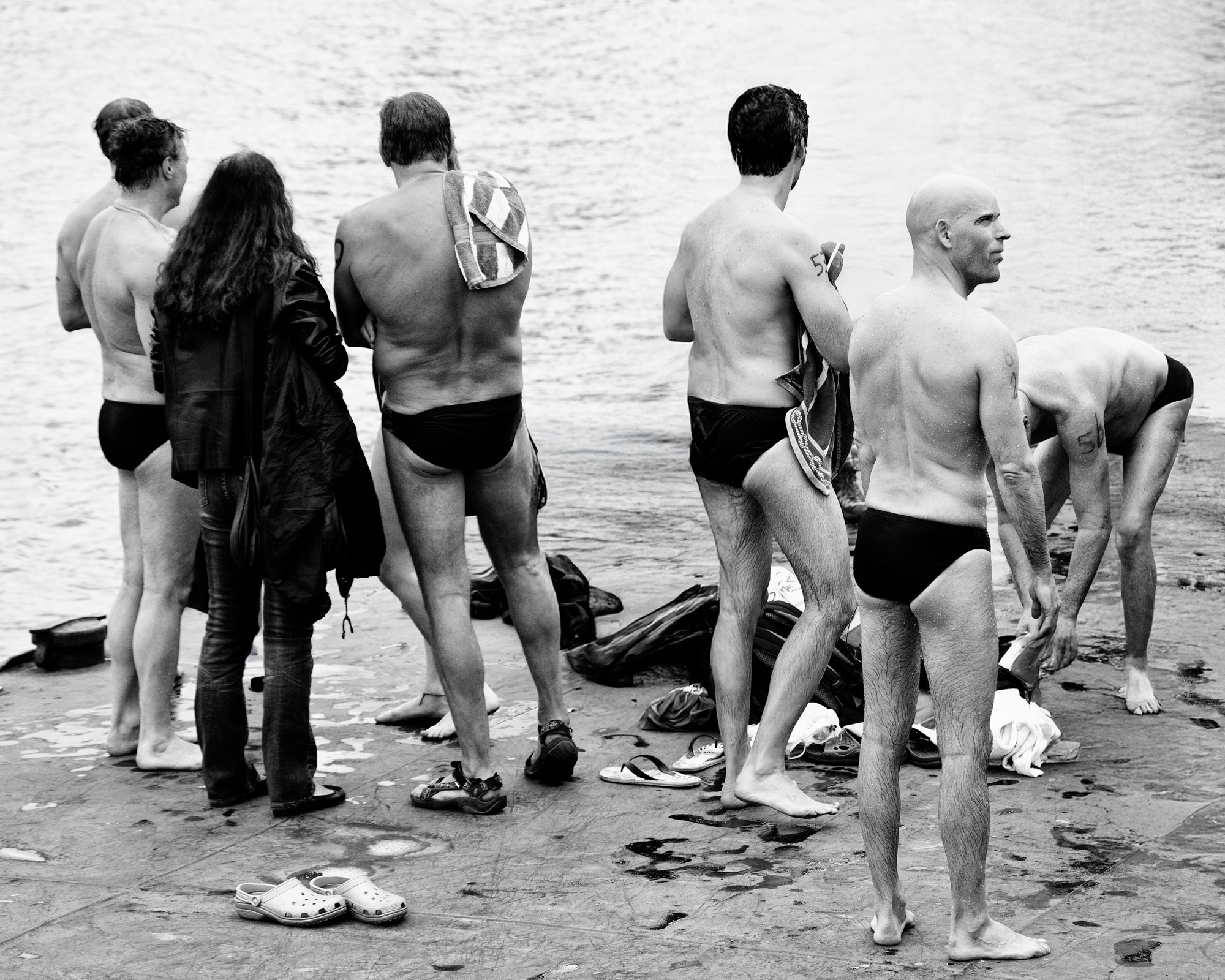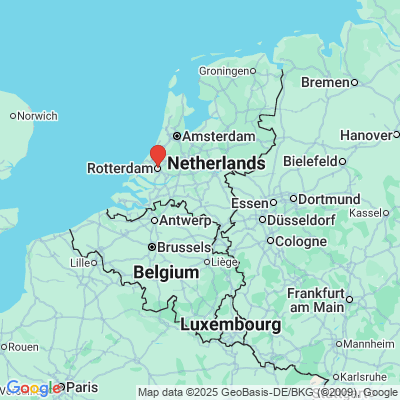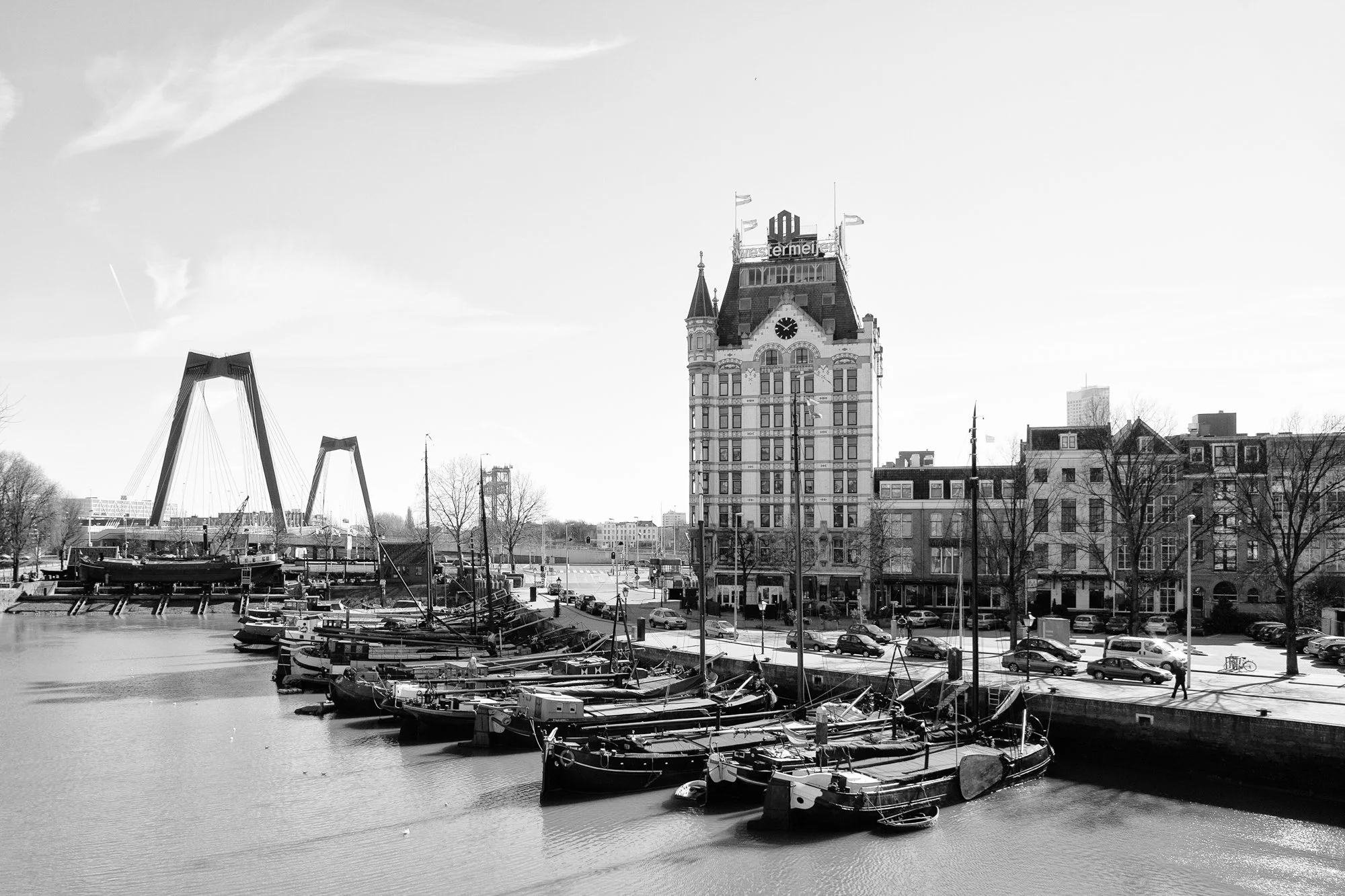From 2010, when Rotterdam Swim was still Rondje Noordereiland.
Each summer in Rotterdam, when the tide slows and the Maas turns mirror-smooth, a few hundred brave souls slip into its grey-green waters to swim around the island that beats at the city’s heart — the Noordereiland. What began in 2008 as a daring challenge among a dozen enthusiasts, the Rondje Noordereiland has grown into the Rotterdam Swim, a beloved open-water tradition that binds swimmers, city, and river in one living current. For many participants, it’s not about speed but about the thrill — the taste of brackish water, the slap of waves, the sight of the skyline from water level.
Safety boats, kayakers, and “kantjeslopers” — volunteers running along the embankments — keep watch, but the real challenge is mental: trusting the rhythm of your stroke as the city hums above you. Over the years, the swim has become a symbol of Rotterdam’s grit and love for the river that defines it.
Every edition tells the same story in a different tide — of endurance, community, and the pure joy of diving straight into the city’s bloodstream.
From 2010, when Rotterdam Swim was still Rondje Noordereiland.











